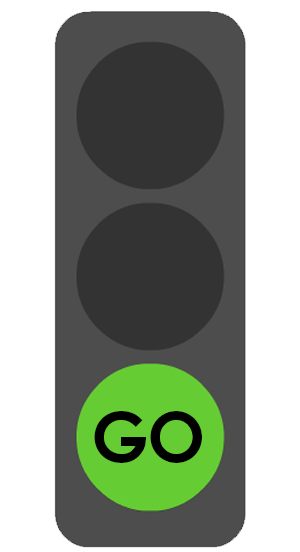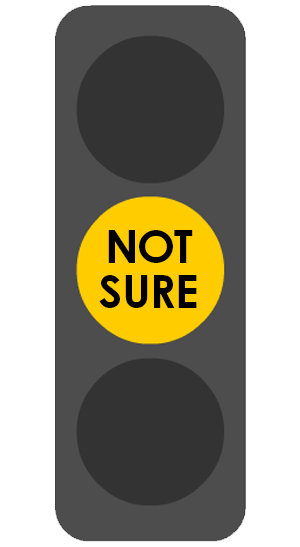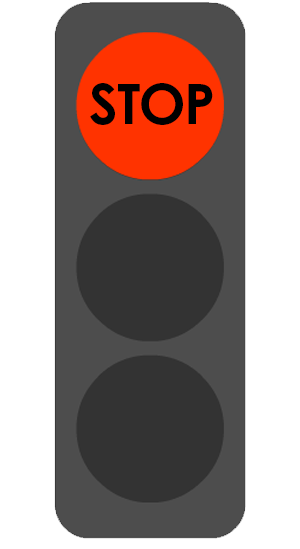More About BabyCues
Learning BabyCues can help you become more “tuned in” to your baby or young child’s feelings and needs by learning to read and respond to their behavioral cues. Learn when your child is ready to interact and play, when they need to be reassured, or when they need a break from an activity. This builds trust and sets the stage for language and other development. See below for a partial list of BabyCues.

I want to connect.
I am interested.
-
Giggling
-
Mutual gaze
-
Reaching toward caregiver
-
Smiling
-
Talking
-
Turning head to caregiver
-
Brow raising
-
Eyes wide and bright
-
Facial brightening
Clusters of Cues: Babys and young children string cues together just as we string together words or phrases to communicate with another person. A single Interaction with your child will often include green, yellow and red cues strung together.

Slow down, wait and watch for what I want and need.
-
Eye blinking
-
Eyes clinched
-
Fast breathing
-
Frown, brow lowering
-
Hand-to-head or face
-
Hand-to-stomach
-
Head lowering
-
Join hands
-
Lip compression
-
Looking away
-
Rapid wrist rotation
-
Self clasp
-
Shoulder “shrug”
-
Tongue show
-
Wrinkled forehead

This is too much for me.
I need a break or a change.
-
Back arching
-
Crawling or walking away
-
Crying
-
Halt hand
-
Overhand pounding or hitting movement
-
Pulling or pushing away
-
Saying or shaking head “no”
-
Spitting
-
Turning head all the way away
-
Whining
Why is Learning Baby Cues Important?
Everyday babies and young children “tell” us about how they are feeling through their cues. For example, if they are frustrated, they may bang a toy on the ground; when they are excited, they may clap their hands. Some cues are easy to see, but some are more subtle. There is a vast world of cues that tell us what babies and young children are “saying” non-verbally. Learning your Baby’s Cues will help you meet their needs and adjust how you interact to prevent problems down the road. It will also support your developing relationship with your child, increasing the emotional connection between the both of you. Learning Baby Cues can help you become more “tuned in” to your baby or young child’s feelings and needs by learning to read and respond to their behavioral cues.
What are Baby Cues?
All mammals, including dogs, cats and horses, use non-language to manage interactions. A frightened dog may pin their ears back and lower their head; a cat eager for attention will rub up against their human. Babies, toddlers, preschoolers, children, adolescents and adults use nonverbal communication cues. It’s natural and it’s not something we learn, it just happens. For example, think about the last time you were uncomfortable; did you put your hand to your mouth? Did you yawn? Did you clear your throat and look away? Did you press your lips together? These are typical cues that signal discomfort with the situation or interaction. You didn’t have to learn to do these things. You did this because it is natural, it’s how you managed the uncomfortable situation.
Red, Yellow and Green Light Cues
Green Light Cues
Green light cues tell you when your baby or child’s brain is ready to play, learn or interact. Babies and young children can only take in so much stimulation. Looking for green light cues is a great way to see if they are ready to engage. In our story book you can see green light cues when the child shows interest in this new food, especially when mom tasted the food and said “Yum!”. Green light cues often give way to yellow light cues. This happens when the child loses their ability to focus and engage or when they are unsure about the situation.
Yellow Light Cues
Yellow light cues tell you when your baby or child is uncomfortable or unsure about something. They are starting to get overwhelmed or need to slow down and have time to process the interaction. When we see yellow light cues, we can pause, slow down and wait for the child to return to more engagement or move toward less engagement. Yellow light cues often come before red light cues, as the child becomes increasingly uncomfortable or unsure.
Red Light Cues
Red light cues are often easy to see. They are “big” cues that say “no” or “I need a break.” When we see red light cues it’s important to ‘listen’ to the cue and provide the child a break or remove them from the situation. A red-light cue tells us that this interaction is too much, and the child may get distressed and progress to crying. In our story book we see the mom immediately withdraw the food when the child shows a “halt hand”. We also see the parent verbalize what they think the child is saying, when the parent says “Oh, did you change your mind?”. This is an example of sensitive and responsive caregiving. The parent read the cue and responded in a way that was supportive to the child.
Questions?
Please give us a call
We look forward to talking with you!
-
Phone
206-543-8528
-
Business hours
Monday – Friday
7:30am – 4pm
-
E-mail
pcrp@uw.edu
-
Mailing Address
Parent-Child Relationship ProgramsUniversity of Washington - Box 357231
Seattle, WA 98195-7231
-
Office Address
Parent-Child Relationship ProgramsUniversity of Washington
Health Sciences Building F-346
Seattle, WA 98195-7231
Prefer exploring on your own?
Check out our FAQ section
for answers to common questions
WE WANT TO CONNECT WITH YOU!
Feel free to fill out our contact form or call us at 206-543-8528